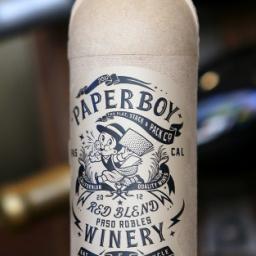Making the case for cardboard bottles, to replace glass
 Apart from the introduction of twist-off caps, glass bottles have remained impervious to innovation for centuries-mainly because there's nothing wrong with them. Except they're fragile and awfully heavy. That's the insight behind Paperboy, a new brand of wine packaged in cardboard bottles.
Apart from the introduction of twist-off caps, glass bottles have remained impervious to innovation for centuries-mainly because there's nothing wrong with them. Except they're fragile and awfully heavy. That's the insight behind Paperboy, a new brand of wine packaged in cardboard bottles. The container is made mostly of industrial paper waste that's 80 percent lighter than its glass cousin, so it takes less fuel to transport. Even with fuel prices dropping, gas and oil remain a huge expense for businesses. The packaging is molded from paper pulp (think of the material used in egg cartons) and lined with a plastic bladder, made by GreenBottle. Benefits include lighter weight, extra insulation keeping drinks cool longer, no risk of breaking, and cardboard is easier and more efficient to recycle than glass.
Beer manufacturer Carlsberg says they are also working on cardboard beer bottles, but unlike other cardboard bottles their design won't have a plastic bladder on the inside. Instead, the 100% biodegradable & recyclable cardboard will be treated with a coating on the inside to prevent beer from seeping through. They aim to release them in the next three years.
disposable plastic pouches > refillable plastic jugs > refillable glass > disposable plastic jugs > disposable paper cartons > disposable glass
I admit, "aluminum" is missing from the list, but it would likely fall second to last.
I only wonder why they don't freeze milk solid for shipping, so it can be stacked in its flimsy plastic jugs without requiring the added weight and support of milk crates.